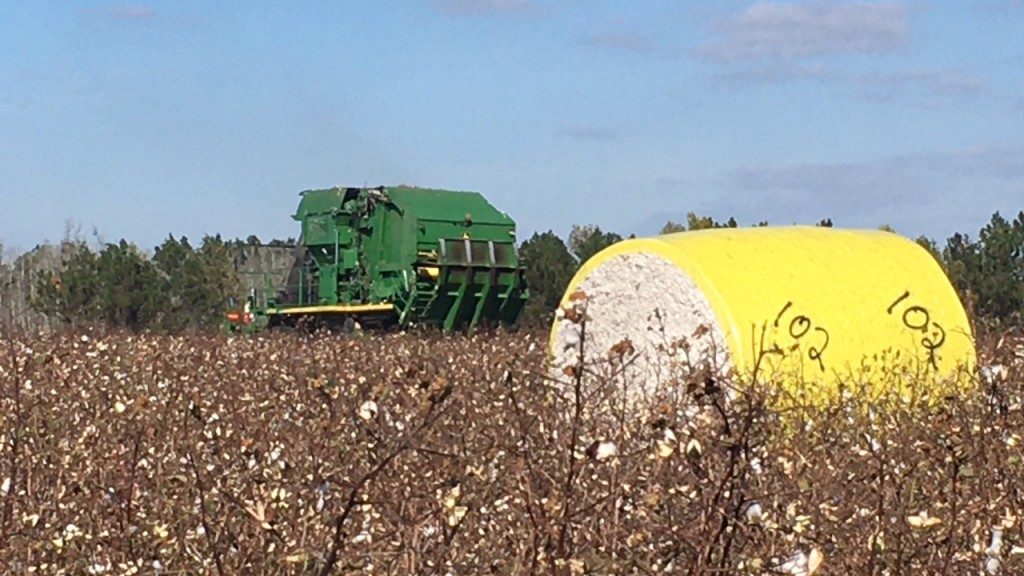The topic this past weekend has been how dry it getting. Pam Knox says the weather pattern that we are currently in has a big high pressure center over the southern part of the region. This is preventing any development of rain in most of the region except northern Alabama and North Carolina and Virginia. This pattern will keep most of the Southeast dry this week except for a few showers later in the week in areas that are under the high pressure dome. A little more rain is expected in week 2 but the pattern is generally expected to continue for the next two or three weeks, so dryland fields may see some negative impacts, especially because the high pressure and lack of clouds will help the temperatures climb. The 6-10 precipitation outlook from the NWS indicates that we will have near normal chances of rain and the temperatures are going to above normal.

Below is the 7 day summary from the Moultrie location of the UGA Weather Station network. It is getting dry and soil temperatures are warming up.
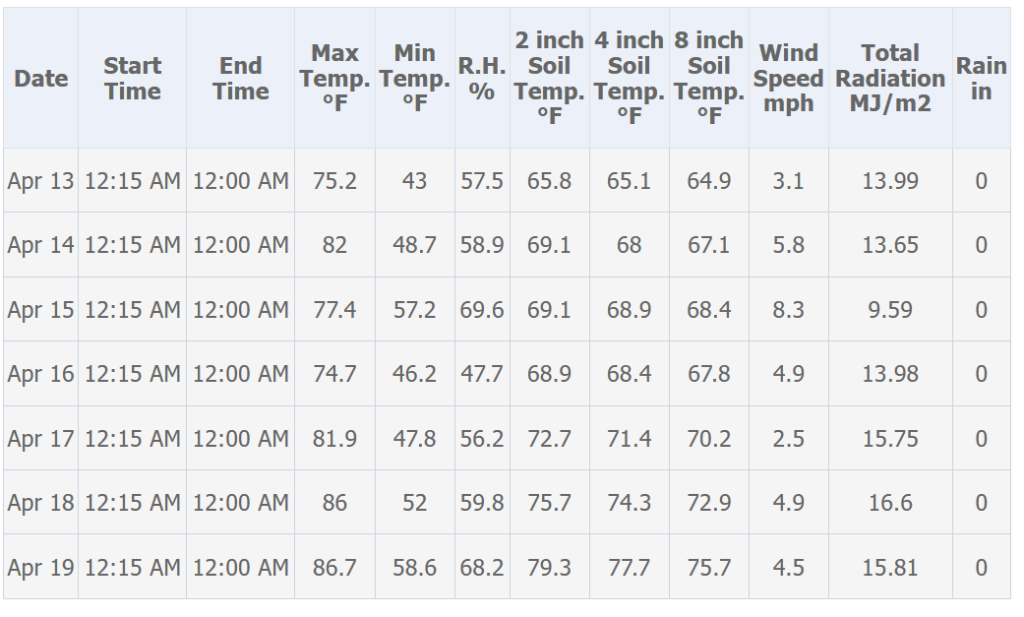
I have been getting a question or two about irrigating wheat. Dr. Porter, UGA Irrigation specialist, suggests that generally, for wheat you can estimate that you are approximately 1:1 with our ET values from your local weather stations. This is a good guide for an irrigation recommendation. Wheat acts very similar to a forage or grass crop, the ET value from the weather station reports is created from a well-covered grass area. While research shows that wheat can use up to 15% more water than an ET value our higher humidity usually accounts for that. With our recent humidity values below 50% if you have wheat in the mid-season period, or between tillering and anthesis you will need to multiply the daily ET from the weather stations by 1.15 and total this amount over a few days to get an irrigation amount. Stop watering when we get to the hard dough stage if moisture is present.

Corn: The corn crop in Colquitt County ranges from just planted to V7. I have received a call or two about Roundup Liberty tankmix applications for corn. The illustration below shows Dr. Prostko’s work from last year. Roundup + Liberty tank mixes applied to V4 corn. The treatments consisted of three rates (22 oz, 27 oz and 32 oz). All treatments contained Prowl and atrazine.

I had a question or two last week about using Counter and certain herbicides. In the past, this subject has been discussed by Dr. Proskto. He says that organophosphate (OP) insecticides, amino acid synthesis (ALS) and certain pigment (HPPD) inhibitors are metabolized in field corn by the same enzyme system (cytochrome P450 monooxygenase). When these pesticides are used sequentially (INFR + POST) in field corn, this enzyme system cannot successfully metabolize both active ingredients. If you would like a list of herbicides that can be used and not used with Counter applied at planting please go here.
Corn irrigation schedule: The UGA Irrigation reference guide for corn, cotton, peanut and soybean is available here. The illustration below shows the irrigation requirements for corn based off days and weeks after planting, and inches per week and day. Another great irrigation scheduling tool that is free is the UGA Smart Irrigation Crop Fit App. If you would like more information about this app please go to this link.

Over the last couple of weeks, the weather has been interesting. The weather was similar to June a couple of weeks ago to February last week. The Colquitt County location of the UGA on farm corn variety trial on April 2, 2025. GDD info from the agroclimate website is below, and it shows we are ahead of last season and the historical average for the period April 2 to April 19. If you look at the data by week, the GDD was behind for the week of April 9-15.
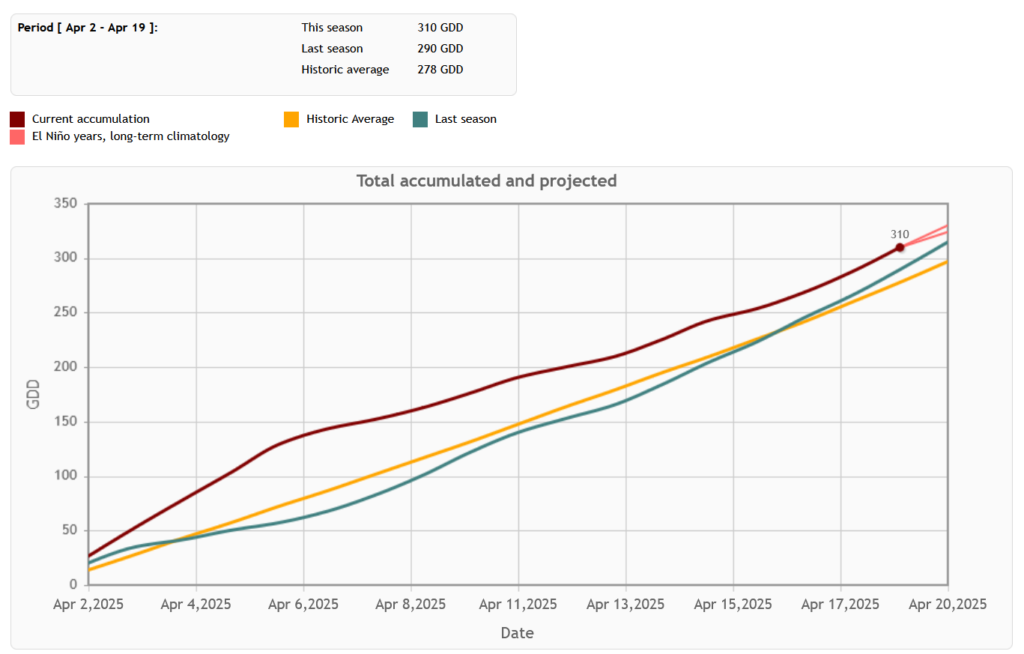
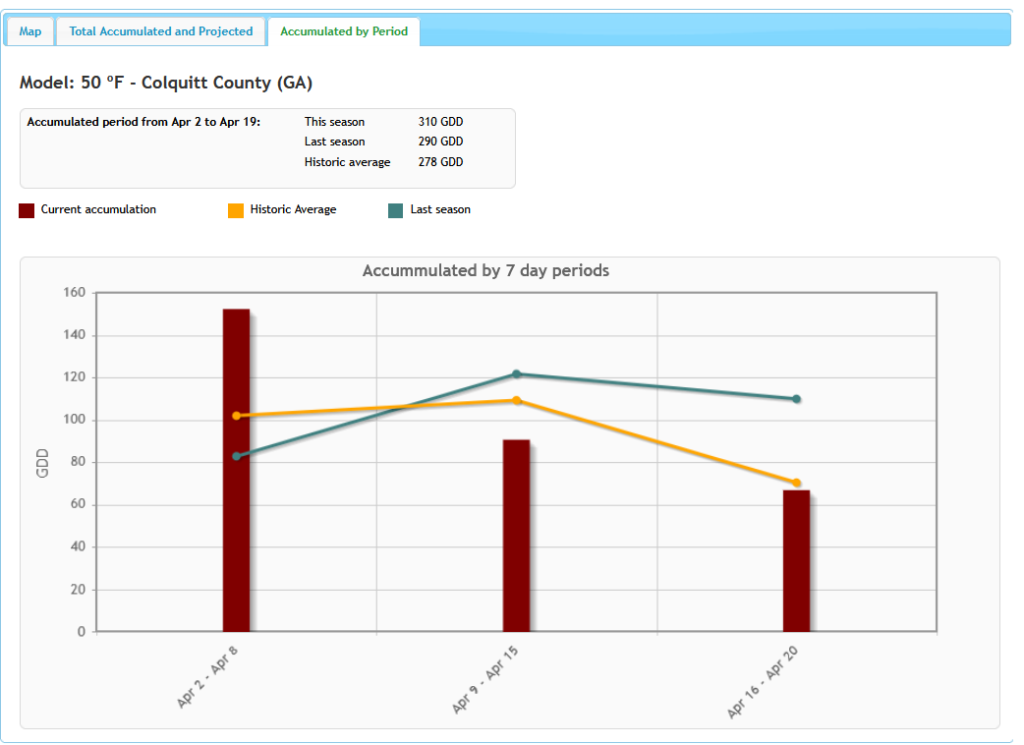
Cotton: The UGA Cotton Newsletter is now available for your viewing pleasure.
Also, according to the NC State Cotton planting calculator this week is going to be great for planting cotton. If 45 or more DD60’s are accumulated in a 5 day period after planting, then the conditions are considered excellent. The limiting factor is going to be the moisture situation. We do not need to be chasing moisture planting dryland cotton or peanuts.

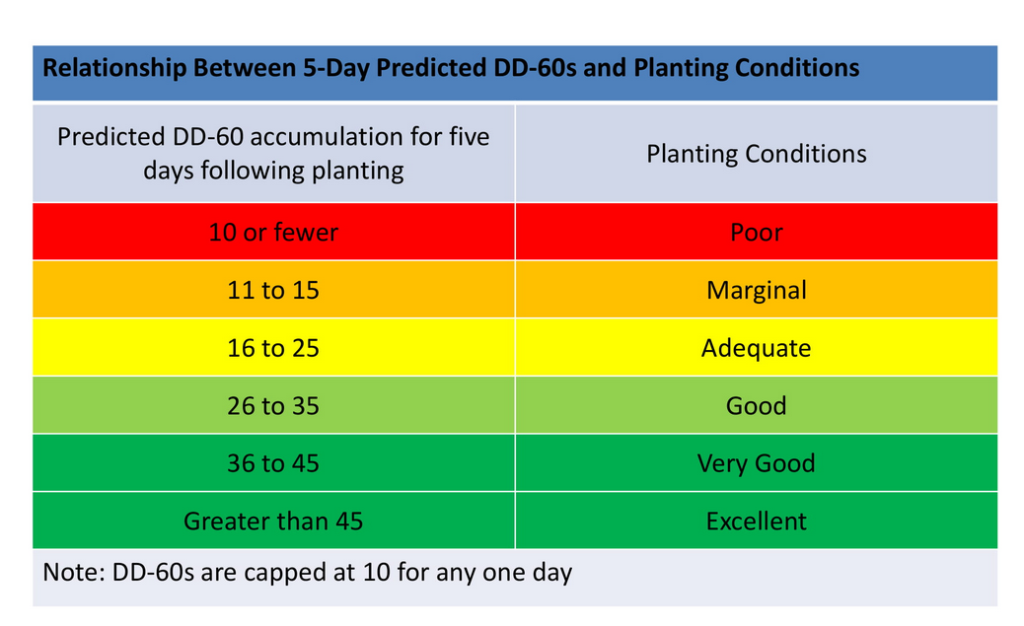
A couple of other things going on this week included the UGA Water Team making a visit to Moultrie to in install a water sensor in a corn variety trial.

We are assisting in a Beltwide soil sampling project, evaluating several soil quality characteristics. Soil samples are taken at various depths in four cotton fields in the county. This project is being done in other locations in Georgia and the Cotton Belt. Tanner had fun this week taking soil samples.
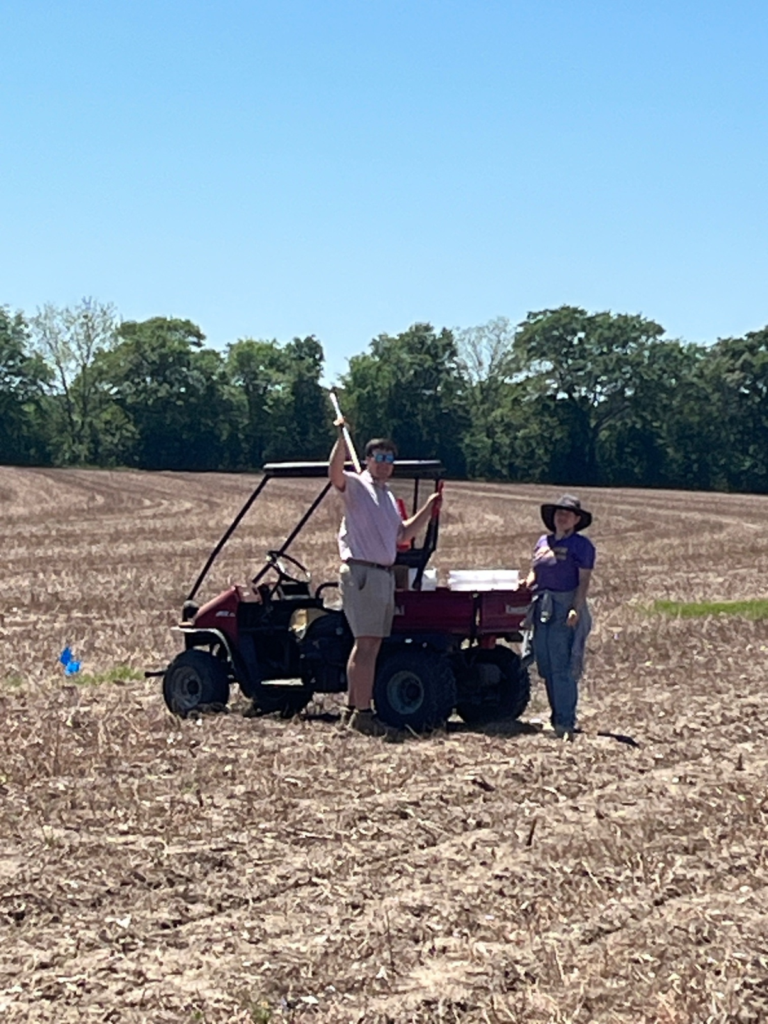
I thought this was interesting. Dr. George Vellidis, UGA Institute of Integrative Precision Agriculture, is working on developing a simulation model that creates aflatoxin risk maps for rainfed peanut fields. We identified two fields in Colquitt County for this project. A Veris rig was used in the fields last week, and then soil samples will be taken this week.

None of the projects above would be possible without the help of local growers.
If you have any questions please contact your local county Extension agent.
Have a great week,
Jeremy M. Kichler
Colquitt County Extension Coordinator
The University of Georgia Cooperative Extension does not endorse or guarantee the performance any products mentioned in this update.
